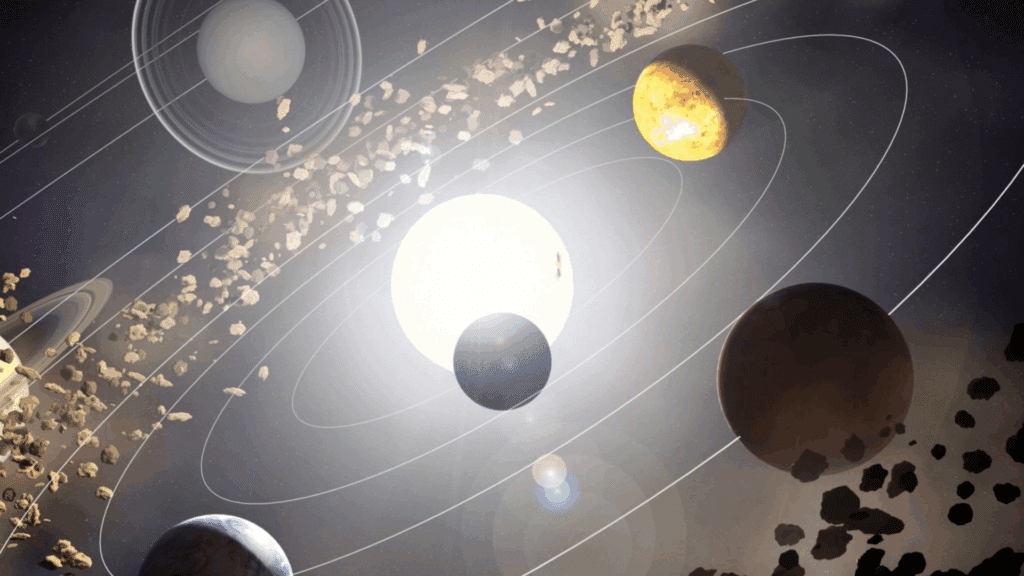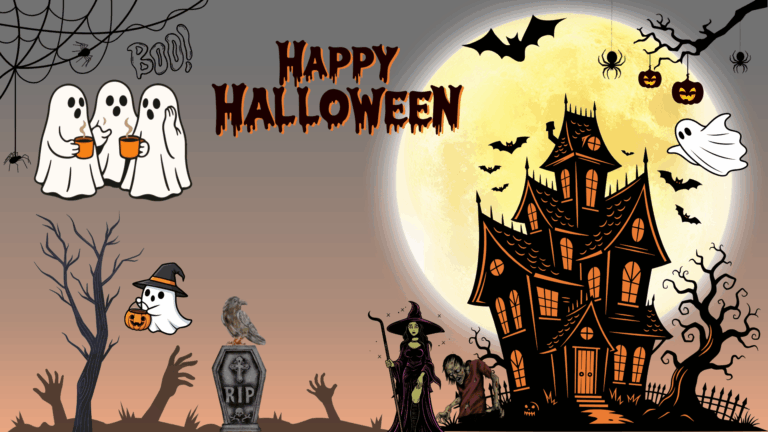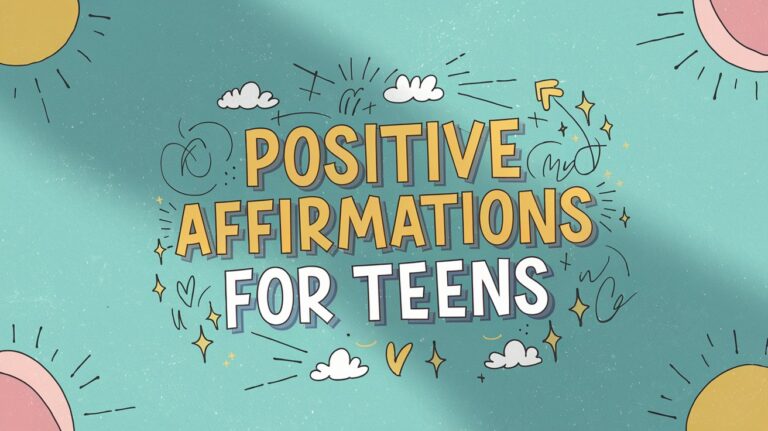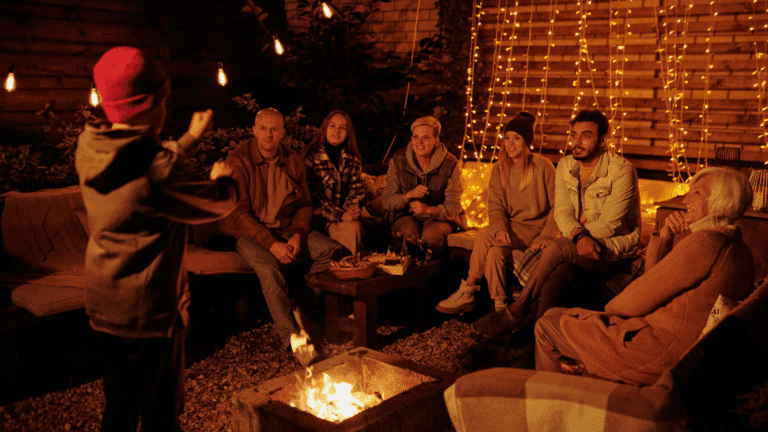Most people think space is just rocks drifting in darkness. But what if you heard one planet rains glass sideways and another could float in a bathtub?
Space doesn’t have to be cold or complicated. It’s packed with wild surprises, giant storms, backward spins, and moons that might hide oceans.
You don’t need to be a scientist to enjoy it. Planet trivia turns strange space moments into fun, shareable bits that spark curiosity.
Suddenly, the solar system feels less like a science lecture and more like the ultimate escapade story full of mystery, wonder, and things you’d never expect.
How Trivia Turns Space Learning Exciting
Who knew learning about planets could feel like solving a mystery? Trivia turns dry space details into fun surprises, even catching adults off guard!
Instead of just knowing that Mars is red, you found that it has the tallest volcano, which is three times higher than Everest. Venus spins backward, and Saturn could float in water. Who wouldn’t want to know more?
Each answer feels like a clue in a cosmic treasure hunt. Competing with friends makes learning a game, not homework.
Suddenly, the solar system isn’t just a lesson but a world of weird and wonderful surprises waiting to be uncovered.
Mind-Bending Trivia About the Planets
These incredible planet trivia will completely change how you think about our solar system and leave you amazed by the strange wonders floating in space.
Planet Trivia
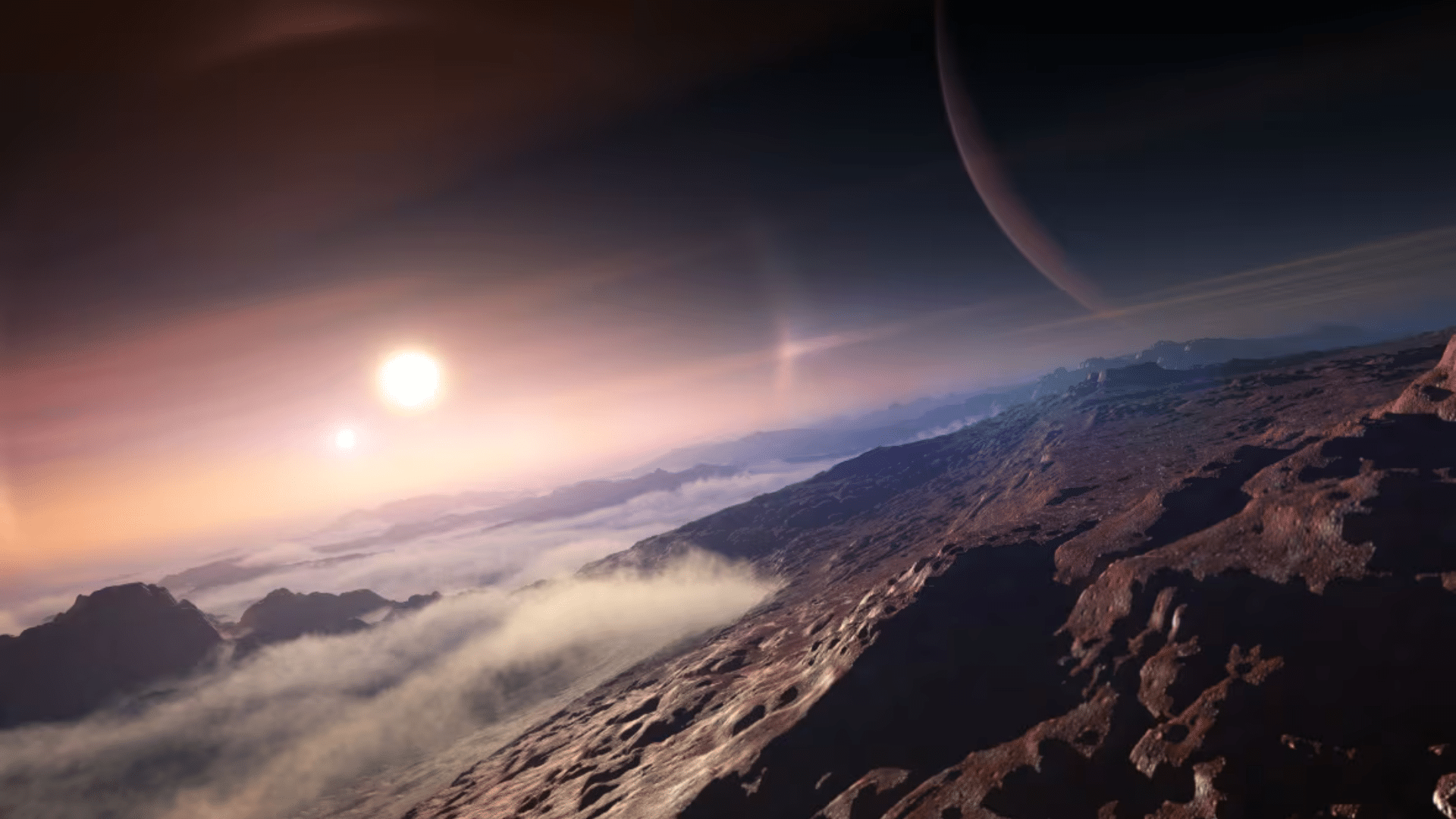
Planet trivia converts boring space trivia into exciting challenges that make learning about our solar system fun and memorable. These surprising questions reveal amazing secrets about planets that will shock and delight curious minds of all ages.
1.Which planet has a day longer than its year?
Ans: Venus
2.Which planet rotates on its side with a 98° axial tilt?
Ans: Uranus
3.Which planet has the most moons as of current discoveries?
Ans: Saturn
4.Which planet is nicknamed the “Red Planet”?
Ans: Mars
5.Which planet has the tallest volcano in the solar system?
Ans: Mars (Olympus Mons)
6.Which planet has a massive storm called the Great Red Spot?
Ans: Jupiter
7.Which planet is the hottest in the solar system due to its thick atmosphere?
Ans: Venus
8.Which planet has the shortest day, spinning once in just 10 hours?
Ans: Jupiter
9.Which planet has retrograde (backward) rotation?
Ans: Venus
10.Which planet is the smallest in the solar system?
Ans: Mercury
11.Which is the farthest planet from the Sun?
Ans: Neptune
12.Which planet has the fastest wind speeds in the solar system?
Ans: Neptune
13.Which planet has a moon named Titan with a thick atmosphere?
Ans: Saturn
14.Which planet’s rings can be seen clearly from Earth with a small telescope?
Ans: Saturn
15.Which planet has the largest moon in the solar system?
Ans: Jupiter (Ganymede)
16.Which planet has a blue hue due to methane in its atmosphere?
Ans: Neptune
17.Which planet’s moon, Triton, orbits in the opposite direction of its rotation?
Ans: Neptune
18.Which planet’s moons are named Phobos and Deimos?
Ans: Mars
19.Which planet has an iron core but no magnetic field?
Ans: Venus
20.Which planet is tilted so far that it essentially rolls around the Sun?
Ans: Uranus
21.Which planet’s moon, Enceladus, sprays icy water into space?
Ans: Saturn
22.Which planet’s atmosphere rains sulfuric acid?
Ans: Venus
23.Which planet is densest in the solar system?
Ans: Earth
24.Which planet has the lowest density and would float in water?
Ans: Saturn
25.Which planet has the most eccentric (oval) orbit?
Ans: Mercury
26.Which planet shows evidence of liquid water in the past?
Ans: Mars
27.Which planet has a nearly circular orbit?
Ans: Venus
28.Which planet has large polar ice caps of CO₂ and water?
Ans: Mars
29.Which planet has a massive canyon system called Valles Marineris?
Ans: Mars
30.Which planet has extreme seasons due to its axial tilt of 82°?
Ans: Uranus
31.Which planet was once thought to be a twin of Earth due to its size?
Ans: Venus
32.Which planet has moons named Ariel and Miranda?
Ans: Uranus
33.Which planet’s surface temperature changes drastically from day to night?
Ans: Mercury
34.Which planet has no moons at all?
Ans: Mercury
35.Which planet has no atmosphere to retain heat?
Ans: Mercury
36.Which planet has an atmosphere dominated by carbon dioxide?
Ans: Mars
37.Which planet takes the longest to orbit the Sun?
Ans: Neptune
38.Which planet has the youngest surface in the solar system?
Ans: Venus
39.Which planet’s rings were first discovered in the 1600s?
Ans: Saturn
40.Which planet’s clouds move faster than the planet rotates?
Ans: Venus
41.Which planet is the only one not named after a mythological figure?
Ans: Earth
42.Which planet shows the strongest auroras?
Ans: Jupiter
43.Which planet may have diamond rain deep in its atmosphere?
Ans: Neptune
44.Which planet’s magnetic field is 20,000 times stronger than Earth’s?
Ans: Jupiter
45.Which planet’s internal heat is greater than the heat it receives from the Sun?
Ans: Jupiter
46.Which planet has over 90 atmospheric pressure at its surface?
Ans: Venus
47.Which planet has no solid surface beneath its atmosphere?
Ans: Jupiter
48.Which planet rotates in just 17 hours but has a 165-year orbit?
Ans: Neptune
49.Which planet is often brightest in Earth’s sky after the Moon?
Ans: Venus
50.Which planet has methane clouds and dark storms?
Ans: Neptune
51.Which planet’s day is 176 Earth days long?
Ans: Mercury
52.Which planet has a moon named Rhea?
Ans: Saturn
53.Which planet has a moon named Tethys?
Ans: Saturn
54.Which planet’s moon, Iapetus, has one bright and one dark side?
Ans: Saturn
55.Which planet’s gravity is only 38% that of Earth’s?
Ans: Mars
56.Which planet’s moon has methane lakes and rivers?
Ans: Titan (Saturn)
Solar System Trivia
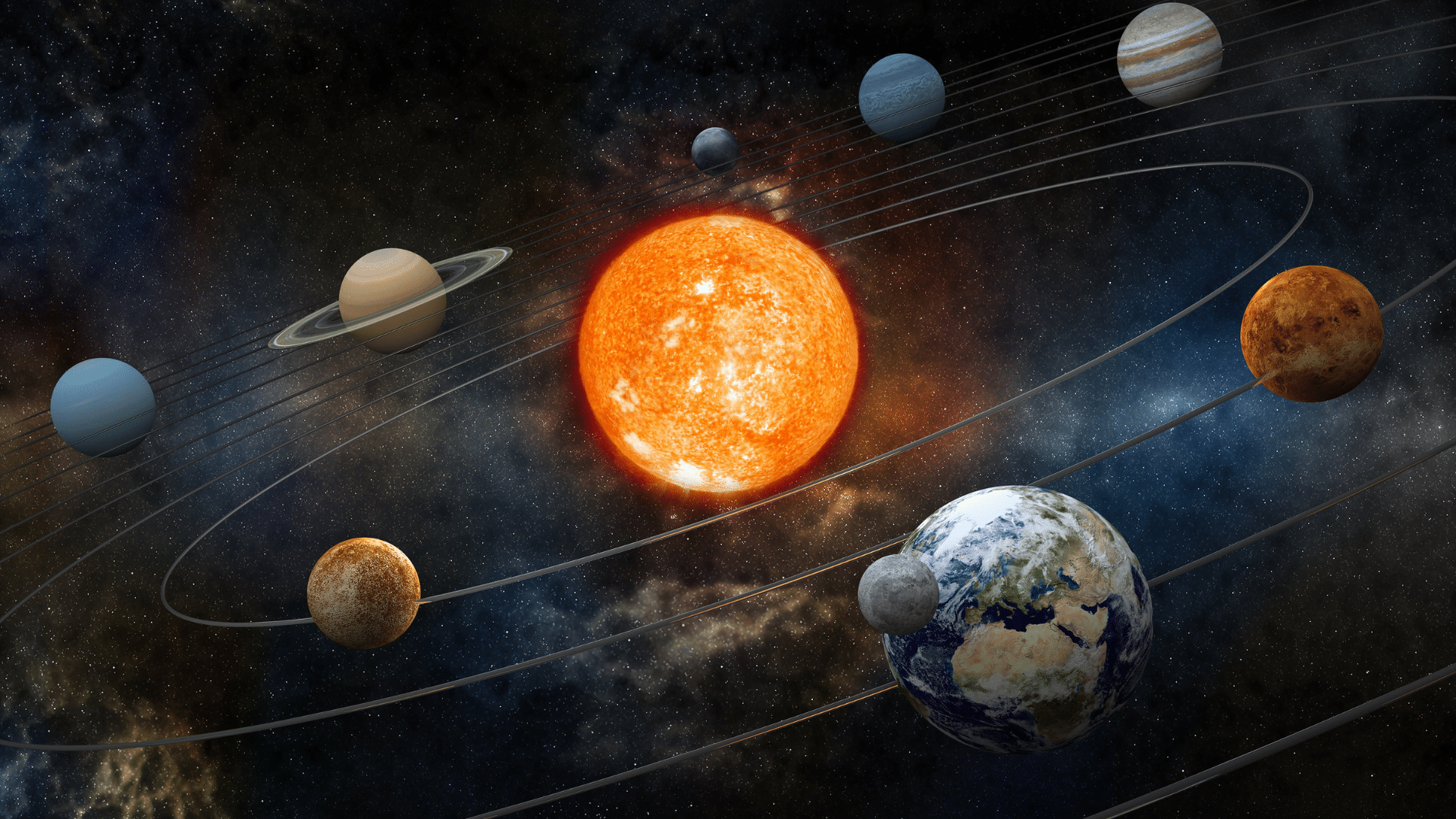
Solar system trivia turns space exploration into an exciting game filled with mind-blowing facts about planets, moons, and cosmic wonders.
These fun questions help people find out amazing secrets about our universe while making science learning enjoyable and unforgettable.
57. What planet has the strongest magnetic field?
Ans: Jupiter
58. Which planet has a day longer than its year?
Ans: Venus
59. What is the smallest planet in the solar system?
Ans: Mercury
60. Which moon has geysers that shoot water into space?
Ans: Enceladus
61. Which planet has the most moons?
Ans: Saturn
62. Which spacecraft visited all four gas giants?
Ans: Voyager 2
63. What is the name of Mars’ largest volcano?
Ans: Olympus Mons
64. Which planet has a storm known as the Great Red Spot?
Ans: Jupiter
65. What is the most common element in the universe?
Ans: Hydrogen
66. Which planet rotates on its side?
Ans: Uranus
67. What is the name of the boundary where the solar wind slows down?
Ans: Termination shock
68. What are Saturn’s rings mostly made of?
Ans: Ice particles
69. Which mission brought back samples from an asteroid?
Ans: Hayabusa2
70. Which planet’s moon has a thick orange atmosphere?
Ans: Titan
71. What is the largest moon in the solar system?
Ans: Ganymede
72. Which moon has lakes of liquid methane?
Ans: Titan
73. What is the coldest planet in the solar system?
Ans: Uranus
74. What kind of star is the Sun?
Ans: Yellow dwarf (G-type main-sequence)
75. What causes seasons on Earth?
Ans: Tilt of Earth’s axis
76. Which planet has blue clouds and high-speed winds?
Ans: Neptune
77. What is a light-year a measure of?
Ans: Distance
78. Which planet has been explored by the Curiosity rover?
Ans: Mars
79. Which planet is known for its hexagonal storm at the pole?
Ans: Saturn
80. Which planet has surface temperatures that vary most wildly?
Ans: Mercury
81. Which planet has the largest canyon in the solar system?
Ans: Mars (Valles Marineris)
82. What are asteroids mostly made of?
Ans: Rock and metal
83. What causes a lunar eclipse?
Ans: Earth blocks sunlight from the Moon
84. What is the source of the Sun’s energy?
Ans: Nuclear fusion
85. What is a black hole?
Ans: A region of space with gravity so strong that nothing can escape
86. What is a galaxy?
Ans: A system of stars, gas, and dust held together by gravity
87. What is the most distant object visited by a spacecraft?
Ans: Arrokoth (by New Horizons)
88. Which moon has a subsurface ocean and ice crust?
Ans: Europa
89. What is the thickest atmosphere among the terrestrial planets?
Ans: Venus
90. Which dwarf planet has a binary relationship with its moon?
Ans: Pluto and Charon
91. Which planet has dust storms that cover the whole planet?
Ans: Mars
92. What is the shape of the orbits in the solar system?
Ans: Elliptical
93. What is a shooting star actually called?
Ans: Meteor
94. Which moon is geologically active and spews sulfur?
Ans: Io
95. Which planet takes about 165 years to orbit the Sun?
Ans: Neptune
96. Which mission studied Jupiter’s atmosphere in detail before Juno?
Ans: Galileo
97. Which moon has “tiger stripes” near its south pole?
Ans: Enceladus
98. What is the densest planet in the solar system?
Ans: Earth
99. Which planet is sometimes visible in daylight?
Ans: Venus
100. Which dwarf planet is the largest in the Kuiper Belt?
Ans: Pluto
101. Which planet has rings made mostly of dust?
Ans: Jupiter
102. What are comets mostly made of?
Ans: Ice, dust, and rock
103. Which planet has the highest wind speeds?
Ans: Neptune
104. Which planet has seasons similar to Earth’s?
Ans: Mars
105. What happens during a solar eclipse?
Ans: The Moon passes between the Earth and the Sun
106. What type of planet is Neptune?
Ans: Ice giant
107. What is the name of the first artificial satellite?
Ans: Sputnik 1
108. Which planet has the largest temperature difference between night and day?
Ans: Mercury
109. Which star is closest to Earth after the Sun?
Ans: Proxima Centauri
110. What is a nebula?
Ans: A cloud of gas and dust in space
111. What is a pulsar?
Ans: A rotating neutron star that emits beams of radiation
112. What is dark matter?
Ans: A form of matter that doesn’t emit light but exerts gravitational effects
Planet and Solar System Myths People Still Believe
Many people still hold surprising beliefs about planets and the solar system that science has long since updated.
1. Mercury is the hottest planet because it’s closest to the Sun
Truth: Venus is hotter due to its thick carbon dioxide atmosphere that traps heat.
2. The Great Wall of China is visible from space, but Earth’s features aren’t
Truth: Many features like cities, roads, and rivers are visible from space, but the Great Wall is actually hard to see.
3. Pluto is no longer part of the solar system.
Truth: Pluto is still in the solar system; it’s now classified as a dwarf planet, not removed entirely.
4. The Moon has a dark side that never receives sunlight
Truth: The far side of the Moon gets sunlight, we just never see it from Earth.
5. Saturn is the only planet with rings
Truth: Jupiter, Uranus, and Neptune also have rings, but they’re just fainter and harder to see.
6. You’d instantly freeze in space
Truth: You’d lose heat slowly in a vacuum through radiation. You’d suffocate before freezing.
7. The Sun is a giant ball of fire
Truth: The Sun creates energy through nuclear fusion, not by burning like fire.
8. Mars is red because it’s hot
Truth: Mars is cold. Its red appearance is due to iron oxide (rust) on its surface.
9. The asteroid belt is crowded and dangerous to travel through
Truth: Asteroids are spread out over vast distances, and spacecraft pass through them safely.
10. Gravity is the same on all planets.
Truth: Gravity varies. For example, you’d weigh less on Mars and more on Jupiter.
Bottom Line
Who knew that learning about space could feel like chatting with friends over coffee? Planet trivia proves that science doesn’t have to be scary or boring.
The best part about planet trivia is how it brings people together. Friends compete over who knows the weirdest space trivia.
So the next time someone shares a planet trivia, they’re not just spreading knowledge. They’re sharing wonder, sparking conversations, and proving that learning never stops being fun when it feels like a stunt.
Drop a comment below and share those moments when space facts brought a smile to your face. Other readers love hearing these stories, too!


